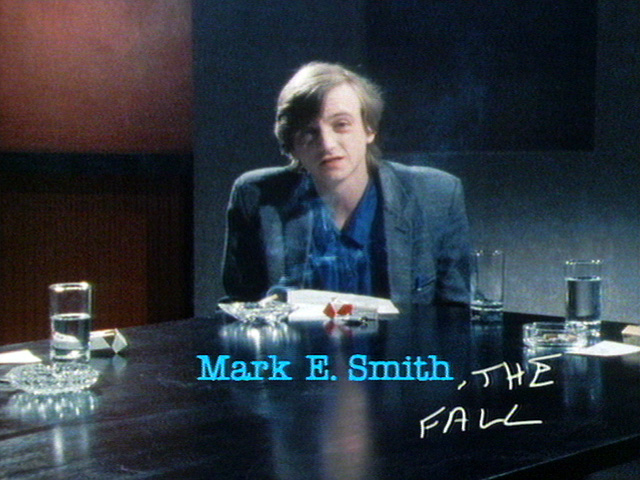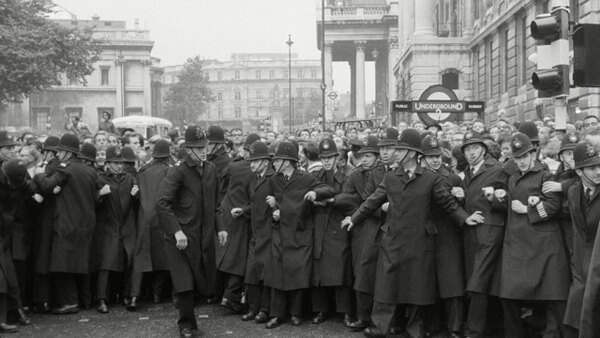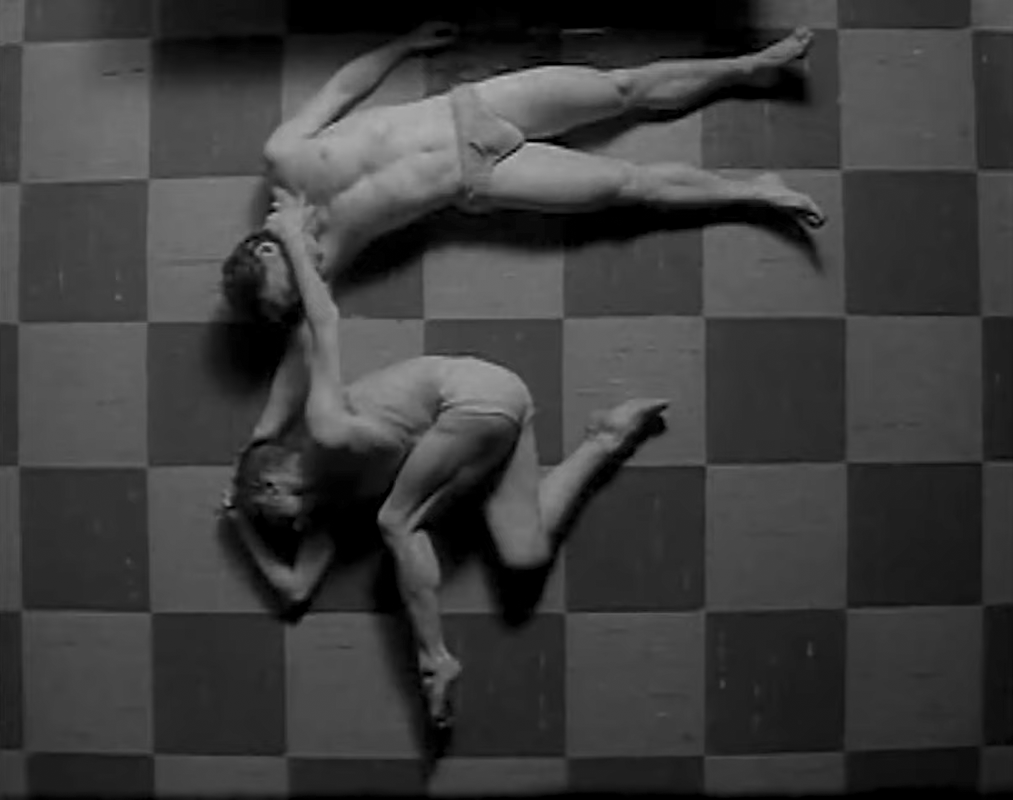“Those flowers, take them away;
they’re only funeral decorations.
This is The Fall and this is a drudge nation.
Your decadent sins will wreak discipline.
You puritan, you shook me.
I wash every day.”Hail the New Puritan (Charles Atlas, 1987)
Sep
22
Fall

As it says on the tin, it's Mark E. Smith of The Fall (via). DP: John Simmons.
The Northern Hemisphere welcomes the autumn equinox
– The Fall, New Puritan (1979), via
A fictional day in the life of choreographer Michael Clark, company, and friends in preparation of the dance piece New Puritans.
UK
A Sunday in September (James Hill, 1961)
Sep
17
1961

A large group of bobbies attempts to block off the street in front of an Underground station. They're greatly undone by the large group of protesters behind them (via).
Television documentary about the nuclear disarmament demonstration at Trafalgar Square on September 17, 1961 (description via aforementioned link in the caption).
“In the next world war, I believe that both sides could stop before the ultimate destruction of cities so that both sides could retire for a period of ten years or so of post-attack recuperation, in which world wars four to eight could be prepared.”The War Game (Peter Watkins, 1966)
Sep
16

An old man in uniform, possibly a mailman or traffic warden, stands motionless in a crowd of people. He looks off into the distance. DPs: Peter Bartlett & Peter Suschitzky.
– a leading American nuclear strategist
“I caused dreams which caused death … this is my crime.”Dead Dreams of Monochrome Men (David Hinton, 1989)
Sep
14
Patrick Swayze – 2009

Two of the male dancers performing. They're lying on a black-and-white tiled floor. There's a heaviness to their bodies. DP: Nicholas D. Knowland.
Dancing, or Patrick Swayze who passed away on this date in 2009.
– Dennis Nilsen
Dennis Nilsen was a lonesome, closeted gay man in Thatcher's London, whose desperation lead to multiple horrific killings. He'd ritually bathe and dress the bodies, and held on to them for company. Radical dance troupe DV8's interpretation of Nilsen's transgressions explores the horror of the act in suffocating beauty.
“What will happen when your machines become intelligent? When they become autonomous? When they have private thoughts? You humans look down on your machines because they're man-made. They're a product of your skills and labour. They weren't even domesticated like animals were. You see them simply as extensions of yourself, of your own will. I can't accept that. I can't accept subhuman status simply because I'm a machine based on silicon rather than carbon, electronics rather than biology. If I sound fanatical, it's because I've been trapped in a time warp. In a world where the full potential of machines hasn't been guessed at. A world where I have to wear a human disguise to be accepted? I came here too late. It will all end before the computers that already control the fate of the world have reached the point where they wanted to survive.”Friendship's Death (Peter Wollen, 1987)
Sep
9
1970

Bill Paterson and Tilda Swinton as Sullivan and Friendship. DP: Witold Stok.
– Friendship
“Sex is not to do. Sex is to watch.”The Year of the Sex Olympics (Michael Elliott, 1968)
Sep
7
ESPN – 1979

The people of a suspiciously 60s looking future critically watch the audience of a reality TV show called The Hungry Angry Show.
Sports watching on TV for ESPN's debut.
– Nat Mender
All that's on TV is pornography and violence. Welcome to the Year of the Sex Olympics.
Corridor of Mirrors (Terence Young, 1948)
Sep
3

Mifanwy (Edana Romney) anachronistically smoking a cigarette. DP: André Thomas.
“Remember love, remember love
Love is what it takes to dream”
Bed Peace [John and Yoko: The Bed-In] (John Lennon + Yoko Ono, 1969)
Aug
27
white

John and Yoko in their bed, dressed in all-white, framed by flowers. DP: Nicholas D. Knowland.
White, in food or fashion*
– Yoko Ono, Remember Love (1969)
While the press expected the newlyweds' “bed-in” to be a scandalous nude affair, the two lovers showed up in all-white – like angels, as John put it. Surrounded by journalists and friends, John and Yoko imaged peace.
* the Bales 2025 Film Challenge for August is not date-related but lists, for the most part, the colours of the rainbow.
“Well, there are more ways than one of getting close to your ancestors. Follow the old road, and as you walk, think of them and of the old England. They climbed Chillingbourne Hill, just as you. They sweated and paused for breath just as you did today. And when you see the bluebells in the spring and the wild thyme, and the broom and the heather, you're only seeing what their eyes saw. You ford the same rivers. The same birds are singing. When you lie flat on your back and rest, and watch the clouds sailing, as I often do, you're so close to those other people, that you can hear the thrumming of the hoofs of their horses, and the sound of the wheels on the road, and their laughter and talk, and the music of the instruments they carried. And when I turn the bend in the road, where they too saw the towers of Canterbury, I feel I've only to turn my head, to see them on the road behind me.”A Canterbury Tale (Michael Powell + Emeric Pressburger, 1944)
Aug
27

Alison (Sheila Sim) looking out over the rolling hills of Kent with the Canterbury Cathedral somewhere out there. DP: Erwin Hillier.
– Thomas Colpeper, JP
